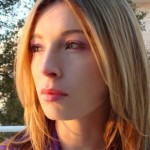Eileen G’Sell
St. Louis, Missouri

Eileen G’Sell’s poetry has been published or is forthcoming in journals such as the American Poetry Journal, Boston Review, Sonora Review, and Harp & Altar. She received an MA from the University of Rochester in 2003 and an MFA from Washington University in St. Louis in 2006, where she currently teaches English and serves as assistant editor of publications at the Mildred Lane Kemper Art Museum. In 2011 she was recognized by theHerbert Hoover Boys and Girls Club for Outstanding Service to Mentor St.Louis at Farragut Elementary School.
Presentation(s):
THE HINGE – Art Gallery. Thought Salon. Creative Turning Point.
Day 2 / Apr, 13 @ 4:15 pm
Lower Level : Room C
Recent decades have witnessed a spate of commercial and cultural growth throughout St. Louis city, but elisions persist, especially those that embrace the fine arts. Predominate concerns include where emergent artists can show their work and come into contact with viable patrons, as extant venues by and large do not exist at this time. To engage these questions and launch a dialogue about how the gallery space itself can bring artists, curators, patrons, and communities together, this panel includes a wide variety of arts-passionate professionals: Lauren Pressler, visual artist and curator; Francesca Wilmott, director of Los Caminos apartment gallery and assistant registrar at the Mildred Lane Kemper Art Museum; Eileen G’Sell, Mentor St. Louis activist, poet and lecturer at Washington University; Bryan Laughlin Jr., fine-art furniture dealer and antique restoration specialist; and Galen Gondolfi, proprietor of fort gondo.compound for the arts.
The panel will explore the relatively recent history of the apartment gallery as a space in St. Louis, the pros and cons of such developments, and the prospect of a new kind of gallery in the near future. How could such a space accommodate the emergent artist while bringing together diverse participants? How have upstart galleries already strengthened the region, and what can we learn from each other? How can this type of space serve both as cultural crossroad and nexus of distinguished artistic pursuits?





